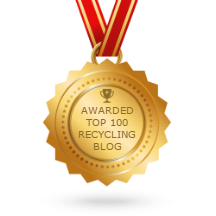 It is becoming increasingly important to make a case for sustainability in business. This requires thinking about the impact your business has on the environment and ways to reduce its carbon footprint.
It is becoming increasingly important to make a case for sustainability in business. This requires thinking about the impact your business has on the environment and ways to reduce its carbon footprint.
In 1991, Frito Lay launched SunChips, a healthier brand of snack that was environmentally conscious and therefore quite ahead of its time. In 2009, SunChips tapped into the combined marketing power of two trends – healthy snacks and environmentally friendly products. This was a huge success at the time, and also made their ethics a public case study. But with over 30 environmental awards under their belt, it seems the company still sets a high standard for green businesses.
While your stakeholders and clients may not know the specifics of your social and environmental practices, it is important in today’s climate to take an interest. More essential still is to be visibly engaged in sustainability. To ignore the power and pressure of being green in 2016 is PR folly.
International awards for sustainability can lead to exciting opportunities International awards add value to your company. Not only do they signify official endorsement that will make you more appealing to potential customers, but they can also lead to new business opportunities.
SolarAid, the winners of a Gold Award brought solar energy to the rural poor in East Africa. According to partnerships manager Charlie Miller, the award ‘took partnerships with funders and other stakeholders to another level’. But there were other rewards too, including £30,000 prize money and international media exposure.
There are also international awards that are less focused on companies working to solve environmental issues. The Best in Biz awards have a category for Most Socially or Environmentally Responsible Company of the Year, to celebrate companies that are setting a great example to other businesses. The winners of the award in 2015 include Monster Energy and Feld Entertainment.
Industry-specific accreditation give you a competitive edge
Demonstrating environmental commitment is becoming an essential part of corporate professionalism. Awards and accreditation are a great way to make you stand out over the competition. But the real value lies in researching schemes and awards that are going to be recognized in your sector and on a local level.
In the UK, for example, companies can apply to the Green Accord for an environmental accreditation. This is a great way to evidence your corporate commitment to fighting climate change. With support from the University of Exeter and Exeter City Council, this is a national scheme that is suitable for all types of organization and supply chain.
The best marketing strategies utilize awards and accolades to their full advantage. It’s not good enough to just have the awards, you need to mention them on relevant web pages too.
Recipient of a Gold Medal from the Royal Society for the Protection of Accidents, for example, is a significant accolade for an environmental services company like OCS. This accolade was published in a press release, but is also mentioned on their asbestos removal page. These are both examples of how you can maximize the competitive impact of your achievements.
Eco labels improve your reputation
Eco labels denote how environmentally ethical a product is. While some awards are extremely competitive, accolades like eco labels are easily earned and legitimately certify your commitment to the cause. It’s important to strive for visibility when it comes to labels, so that you can really market your environmental awareness.
A good example of this is the Green Stationery Company, who supply recycled paper and green office products. Not only do they have their eco labels displayed on their website’s homepage, but almost all packaging and products have a clearly visible eco label. Even if your company isn’t offering ‘green’ products, you should consider using eco labels wherever possible.
You can use an ecolabel index to find a suitable way to certify your product, service or brand. The EU ecolabel can be used by manufacturers, importers, service providers, wholesalers, and any traders and retailers marketing products under their own brand name. Walmart have used the recent increase in supply chain transparency to their advantage by introducing a ‘made by sustainability leaders’ label which will be used by an initial batch of 150 companies to denote their commitment to resolving and reducing environmental issues.
**Original posted April 1, 2016 by Ivan Widjaya, Owner/Editor of Noobpreneur.com.







































